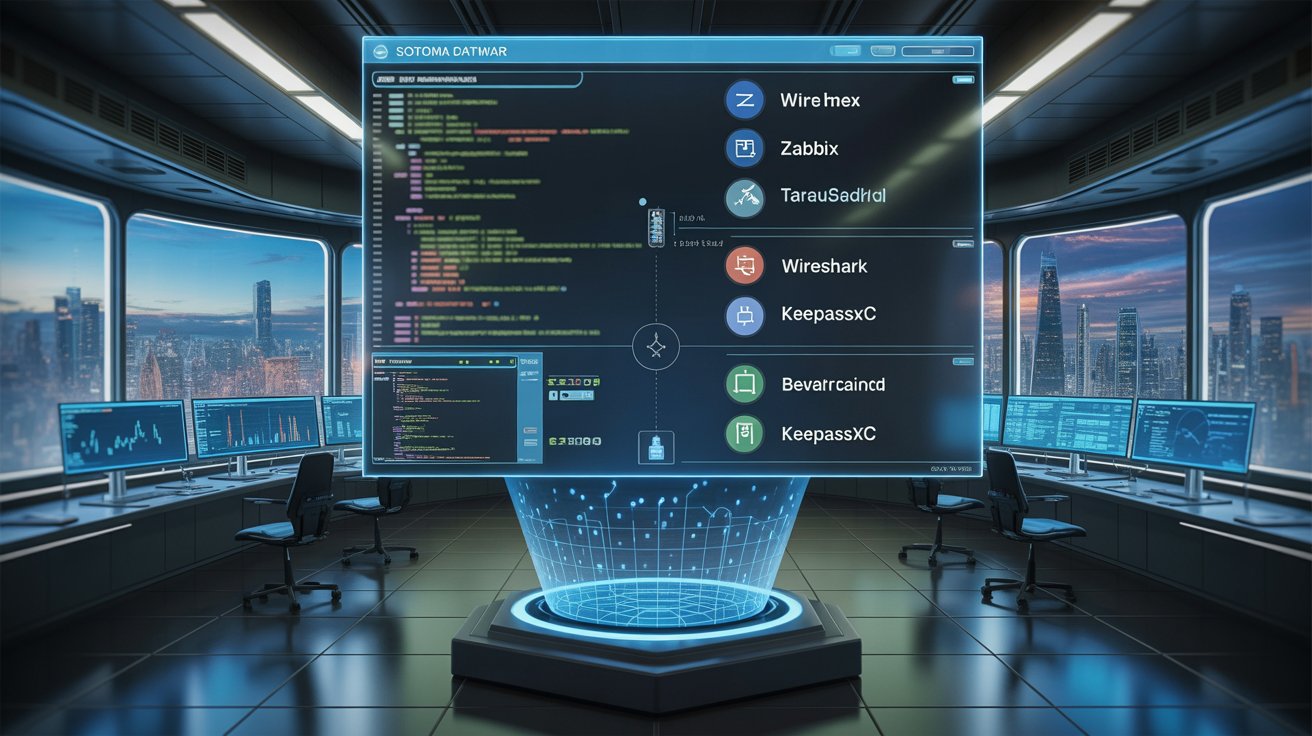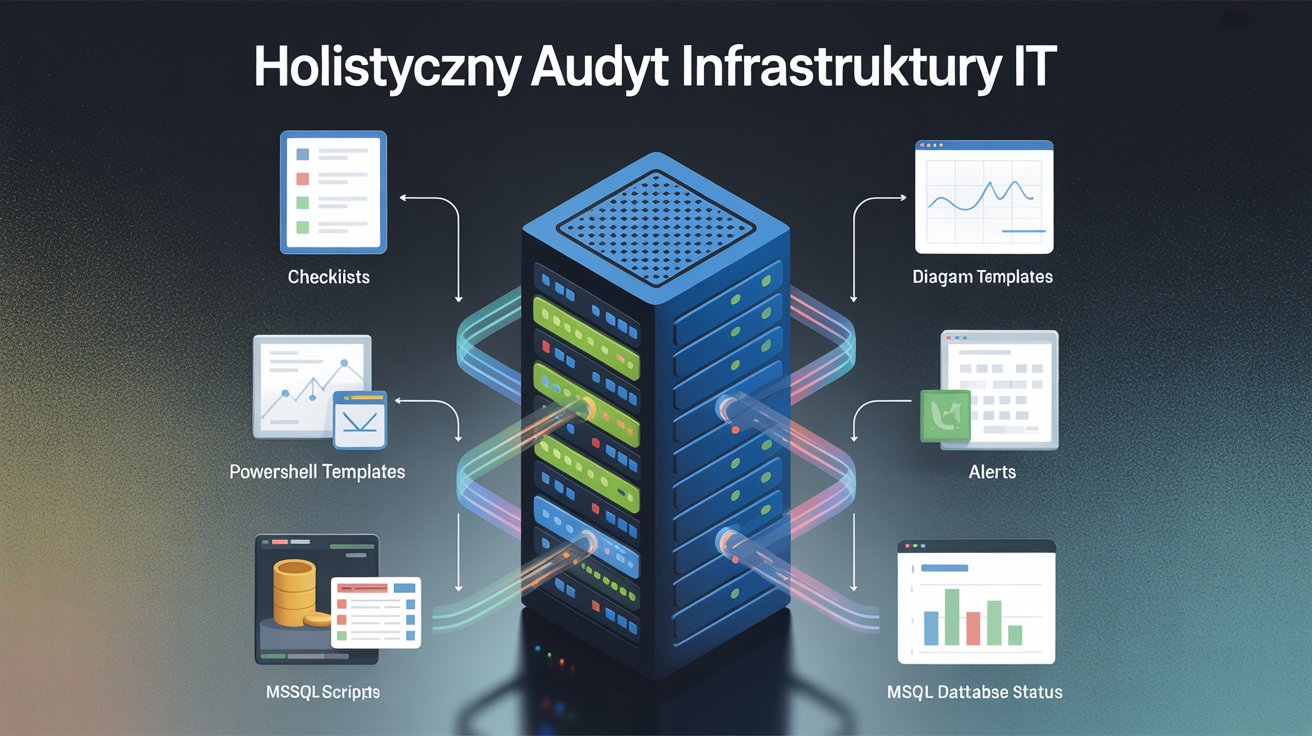TOP 10 Tools for Sysadmins and IT Professionals – 2025 Edition
The best free and commercial utilities that genuinely make an admin’s life easier
1. Introduction
Every network administrator, IT specialist or freelancer knows that the right toolkit can save you dozens of hours and prevent unnecessary outages. The year 2025 brings new challenges: remote work, automation, cyber threats, and hybrid server environments. Here’s our up-to-date overview of the most essential tools you need to know!
2. TOP 10 Tools – Quick Overview
- 1. Zabbix – unrivaled platform for monitoring networks, servers, applications and IoT devices. Highly scalable and open source.
- 2. WireShark – the leader in network traffic analysis. Must-have for diagnostics, sniffing, forensics, and training.
- 3. KeePassXC – offline password manager, essential for managing dozens of admin logins.
- 4. Ninite – automatic package installer/updater (Windows). One click and you update dozens of apps at once.
- 5. PowerShell + Windows Terminal – a powerful set for automation and managing MS systems.
- 6. Remote Desktop Manager – centralized management of RDP, SSH, VNC, and TeamViewer connections.
- 7. VeraCrypt – open-source encryption for drives and USBs, a must for protecting mobile data.
- 8. Notepad++ – irreplaceable code/script editor, supports macros, plugins and hundreds of formats.
- 9. Clonezilla – free system cloning and disk backup—your rescue in case of failure.
- 10. Wazuh – modern SIEM/EDR platform for security monitoring and incident detection.

3. IT Tool Categories – What to Choose?
A good admin does not limit themselves to just one type of software. Here are the tools that will really help you in daily work:
- Monitoring and Alerts – Zabbix, Grafana, Nagios, PRTG. Quickly detect failures and anomalies.
- Remote Management – Remote Desktop Manager, AnyDesk, VNC, mRemoteNG, X2Go. Administer servers and desktops from anywhere.
- Automation – PowerShell, Ansible, Bash, Chocolatey (Windows), Cron, Jenkins.
- Security – VeraCrypt, Bitwarden, Wazuh, Fail2Ban, CrowdStrike.
- Backup & Disaster Recovery – Veeam, Clonezilla, Duplicati, Acronis True Image, Rsync.
- Network Analysis – WireShark, Fing, Angry IP Scanner, Nmap.
- Office Support – Notepad++, VS Code, WinSCP, FileZilla, Everything.
Where to Start?
4. Usage Scenarios – Real-life Admin Examples
- Server outage: Zabbix alerts instantly, admin connects via Remote Desktop Manager, analyzes logs with PowerShell, restores backup with Clonezilla.
- Securing a laptop on the go: VeraCrypt encrypts the USB drive, logins stored in KeePassXC.
- Quick automation: PowerShell or Bash script—daily user folder backup to NAS, sending logs by e-mail.
- Network mystery: WireShark detects unusual traffic—admin blocks suspicious IPs via UFW or Windows Firewall.
- Bulk software installation: Chocolatey and Ninite for Windows—update all basic apps in one command.

5. FAQ for Admins and IT Professionals
What tools should every beginner sysadmin have?
Must-haves: Zabbix (monitoring), PowerShell (automation), WireShark (network analysis), KeePassXC (passwords), Notepad++ (script editing), Remote Desktop Manager (remote sessions).
Are free tools safe?
Yes, as long as you download them only from the official vendor’s website. Avoid “cracks” and suspicious packages from forums!
How to automate software updates?
On Windows—Ninite and Chocolatey; on Linux—apt/yum, Ansible, or your own Bash scripts.
How to prevent data loss?
Use regular backups (e.g. Clonezilla, Veeam, Duplicati), store copies in two locations. Always test restore!
How to learn new tools?
Test on VMs or in a home lab, use official YouTube courses, documentation, and IT forums. Following GitHub and IT blogs is a great idea!
6. Summary
The right toolkit is the key to efficient and secure work for every admin and IT specialist. Try the suggestions above, experiment, and find your own “golden set.” Remember: automation and monitoring are your best guarantee of peace of mind!







